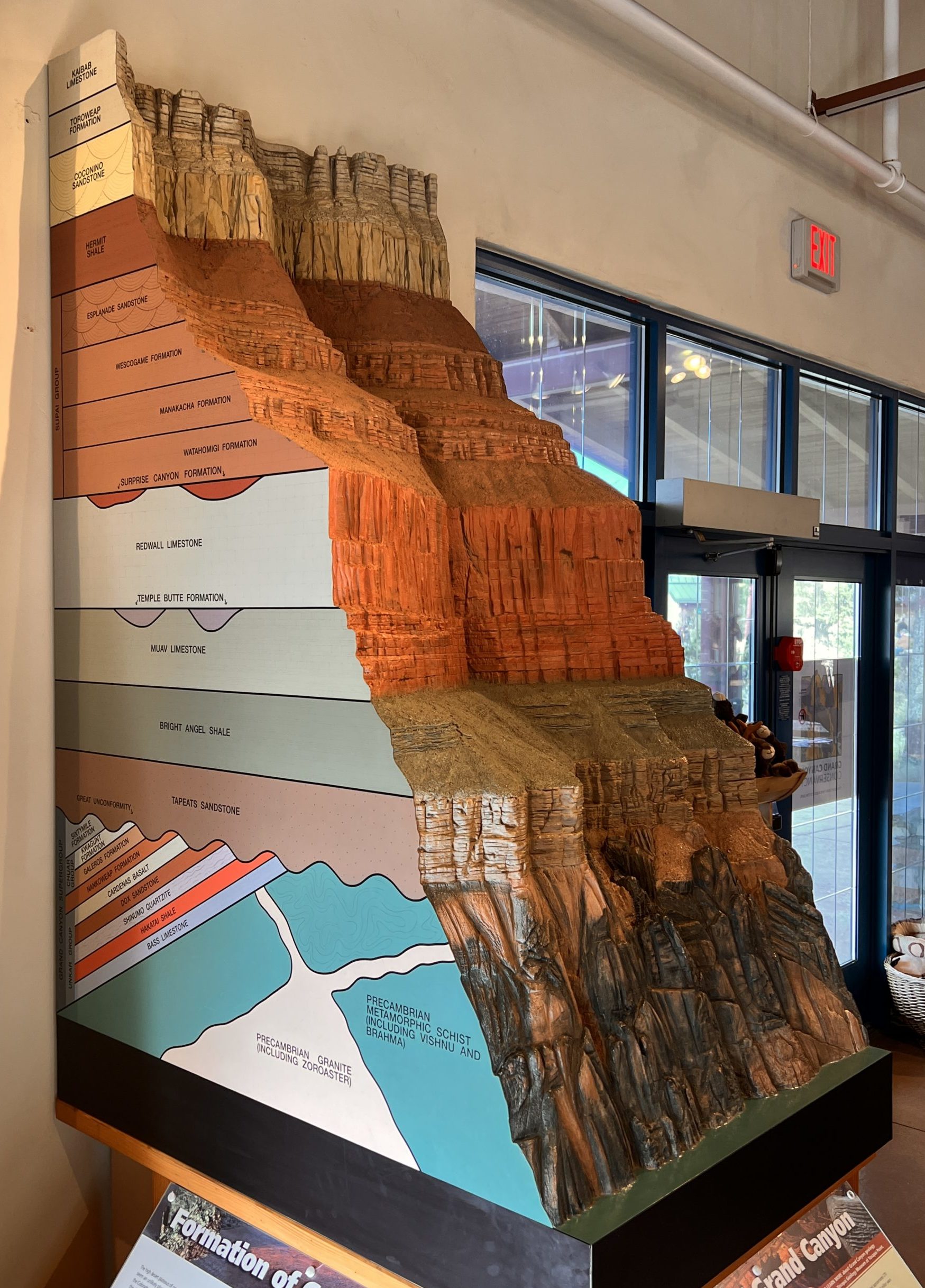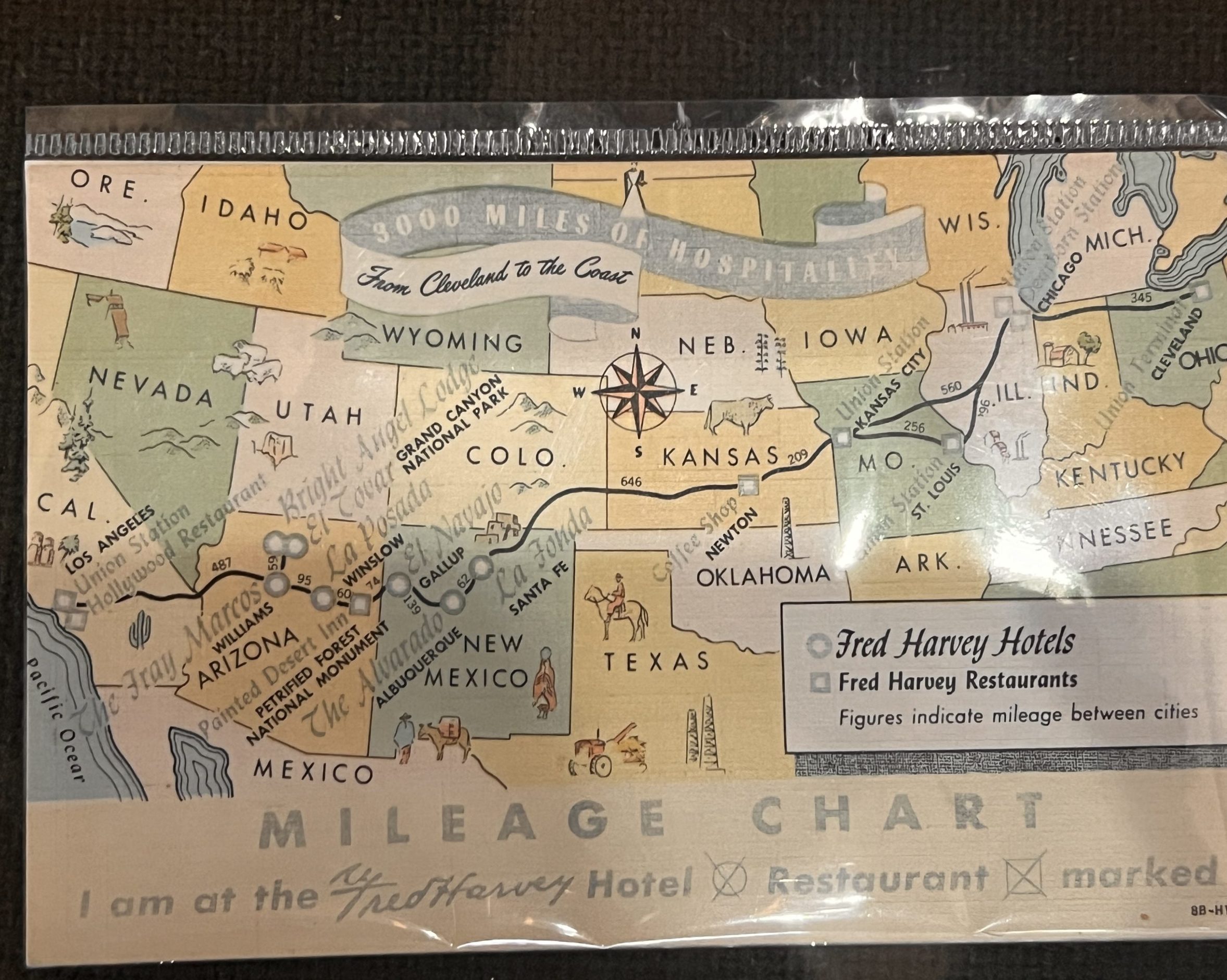Grand Canyon
December 2023Contents
Getting There (Finally)
How Big is It?
Hiking the Canyon
Canyon Geology
Building Tourism
Getting There (Finally)
There we were towing from Kingman, AZ to Flagstaff, and Randy commented on how yet again, a trip to the Grand Canyon had eluded us.
We almost took a day trip to the North Rim from Southern Utah last month, but didn’t.
We almost put it in our travel plan when in the Southwest last winter, but didn’t.
We almost planned a late-fall hiking trip there back when we lived in Iowa, but the low low low forecasted temperatues scared us away.
So there we were, about halfway to Flagstaff, stopped in Williams to dump and fill our tanks.
On the way into town, billboards for the Grand Canyon abounded. So I started doing a little research.
I quickly found that Williams is the gateway to the National Park’s hub on the South Rim.
So we had a choice to make:
Continue East to Flagstaff or turn North towards the Grand Canyon.
I looked at the weather forecast and both locations were slated to receive rain/snow in a few days. So, a few clear days in the 40s at the Canyon or in Flagstaff?
Decision made. We were going to spend the next 4 days at the Grand Canyon!
With the sun beginning its descent, we threw gas mileage to the wind to make it to a dispersed camping area outside the park before dark.
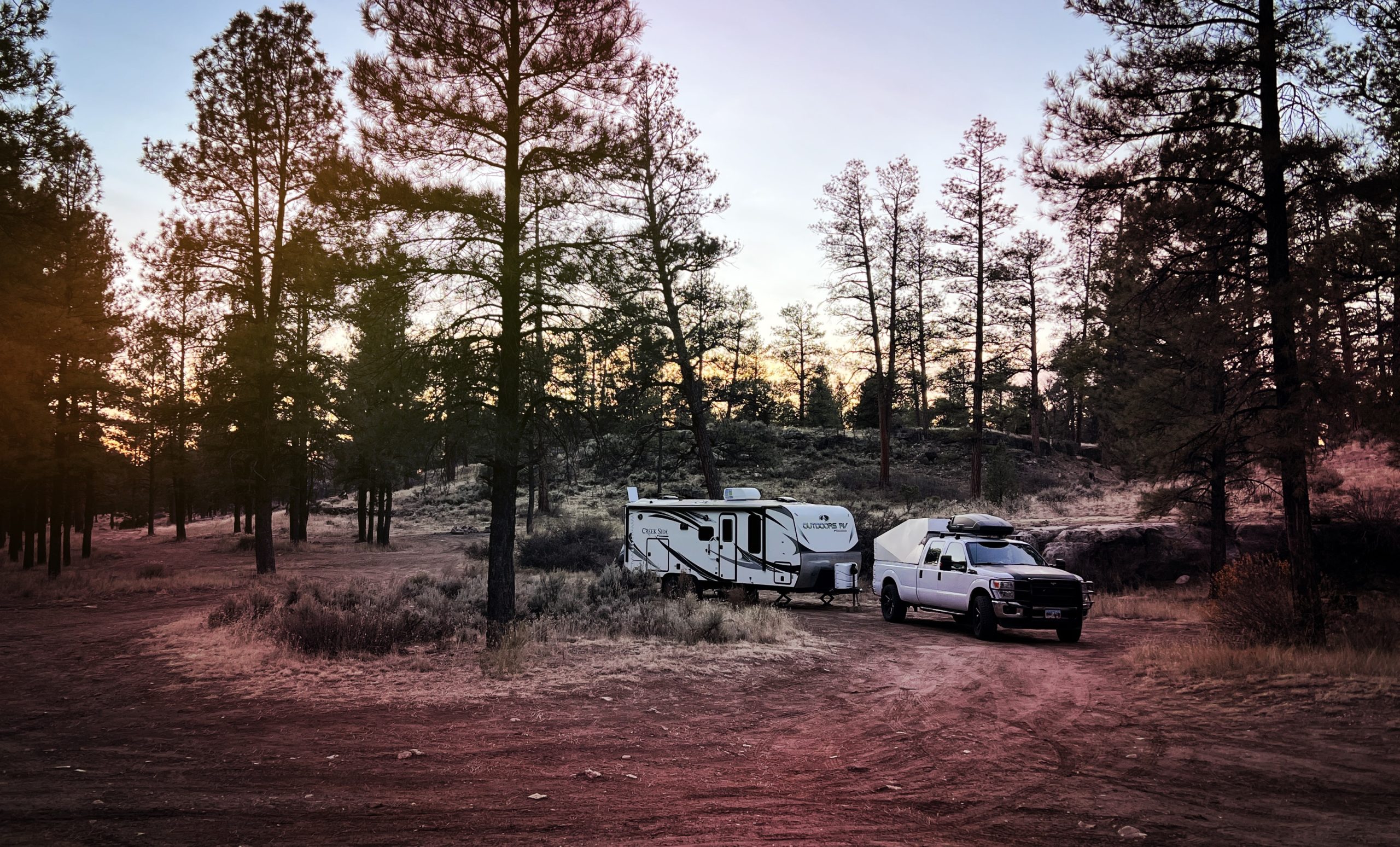
In the Grand Canyon there are thousands of gorges like that below Niagara Falls, and there are a thousand Yosemites. Yet all these canyons combine to form one grand canyon, the most sublime spectacle on the earth.
– John Wesley Powell, 1985
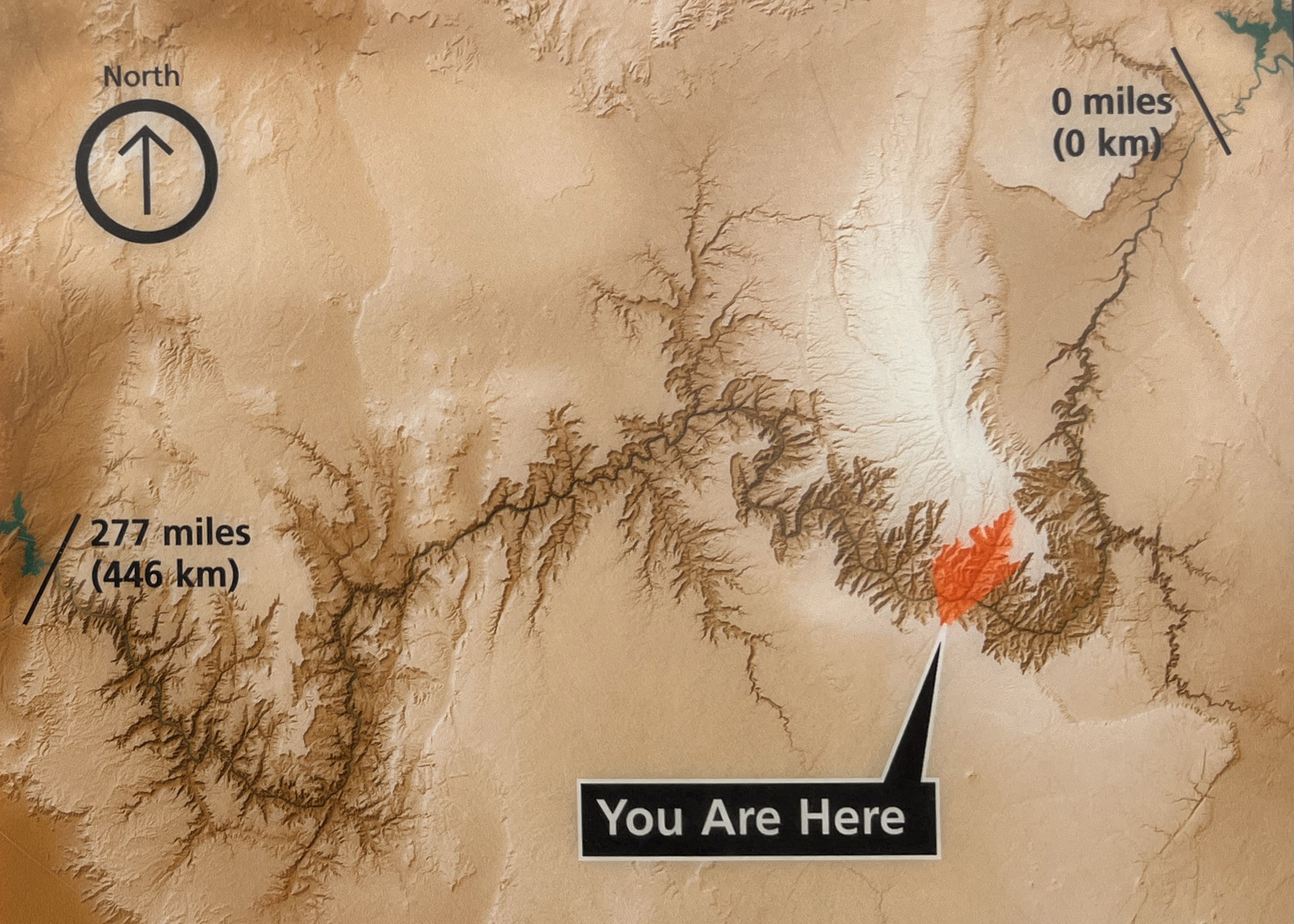
How Big is It?
Only being able to take in a sliver of the canyon at once, it’s hard to comprehend its vastness.
Looking out across the expanse, it’s hard to register that the North Rim is 10 miles away and sitting 1,000 feet higher than the South Rim.
Looking down at the river (a vertical mile below), it’s mind-bending that the river is 300 feet wide.
And over the past 6 million years, the forceful, sediment-carrying Colorado River carved its way all the down to bedrock—the base layer of our continent. Rock that formed 2 BILLION years ago.
Hiking the Canyon
Traveling along the rim, each viewpoint offers a different perspective of this natural wonder. The same is true when hiking down into the canyon. Just a few feet into our descent, I felt a shift—a change in our relationship with the canyon.
We made two excursions into the canyon on different trails. Our hiking time was limited by the length of time we’re comfortable leaving the dogs in the camper. (Pets are not permitted beneath the rim.)
But a few hours for each trek was enough for a good introduction to the trails, have an epic picnic, compare hiking down with hiking up, and get the bug to come back someday and take turns hiking all the way down to the river, maybe even a full rim-to-rim-to-rim. It’s on Holly’s list.
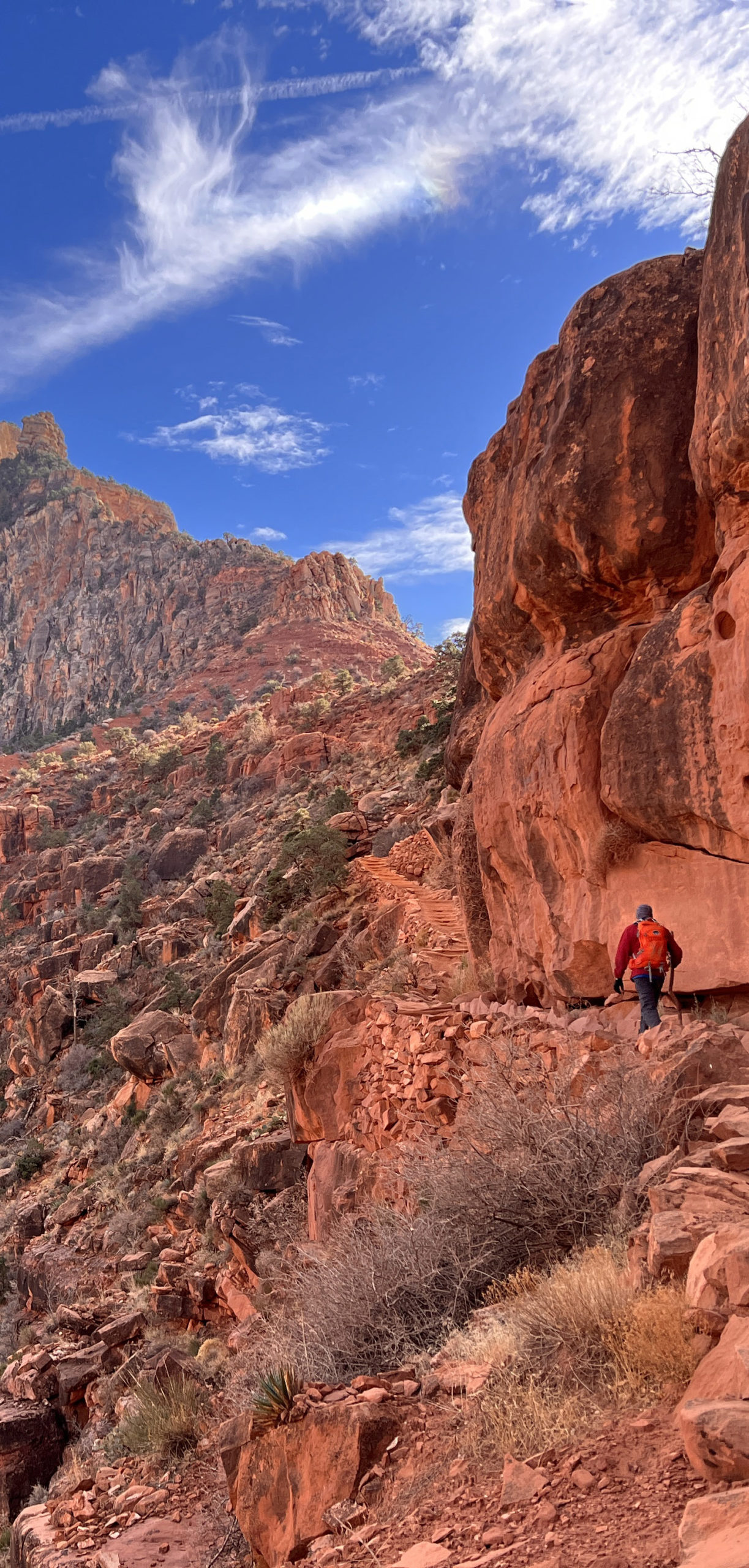
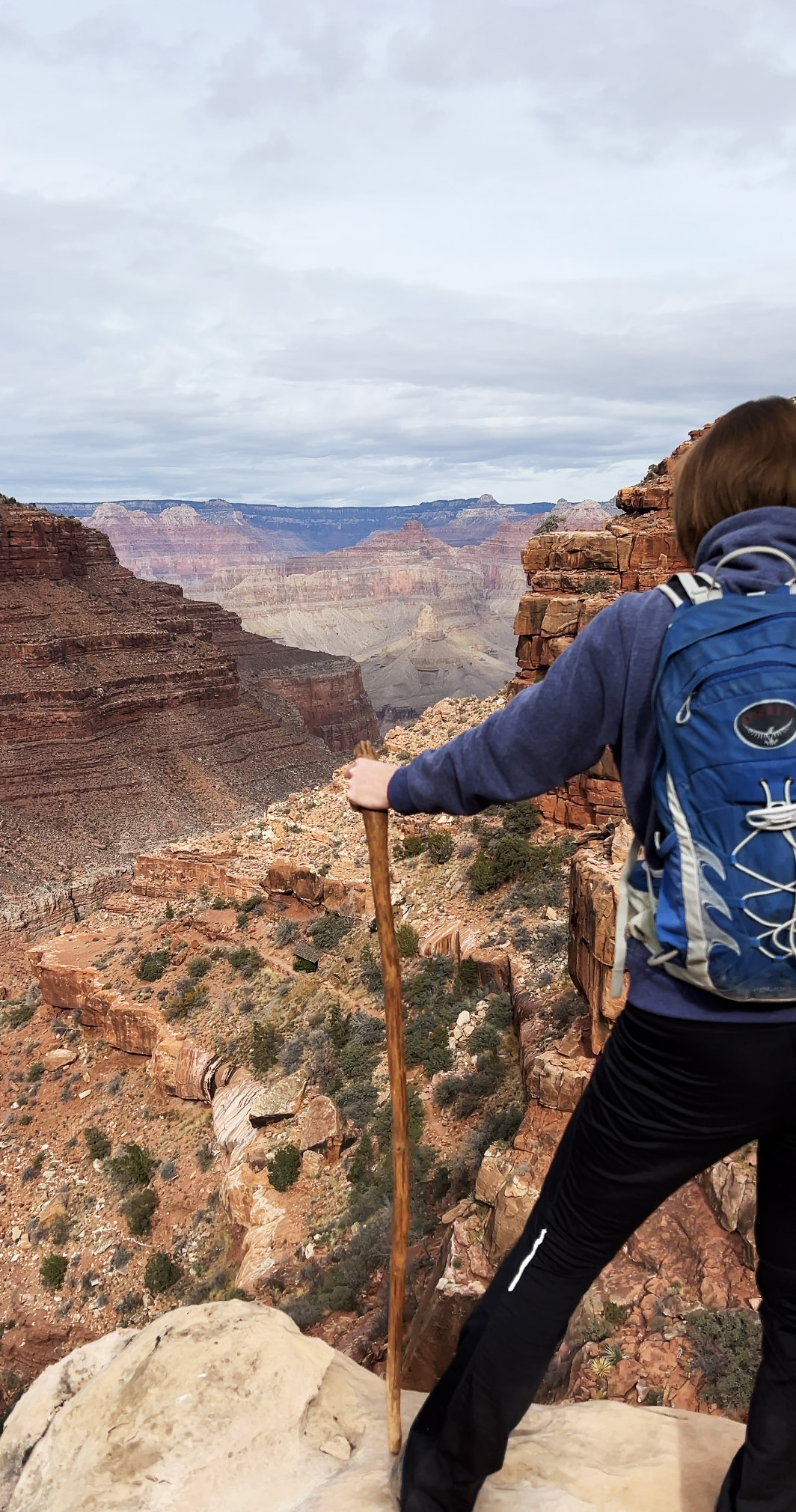
The goal of every raindrop is to get to sea level. With enough time and gravity, water dominates rock.
Building Up and Tearing Down
Traveling to so many scenic places has inspired us to take interest in learning about how landscapes are formed. And the Grand Canyon features a fantastic geology museum. If it also strikes your interest, here—in very broad strokes—is the geologic history of the canyon.
1. Rocks Form
The 5,000 feet of rock layers that comprise the canyon walls formed between 250 million years ago (youngest rock/top layer) and 2 billion years ago (oldest rock/basement layer). Masses collided and welded together; land buckled and mud, sand, and lava piled into basins; seas, deserts, and swamps deposited an enormous volume of sediment that was pressurized into stone.
2. Rocks Rise
20 to 70 million years ago: tectonic activity at varying rates uplifted a big chunk of land by thousands of feet. This area is called the Colorado Plateau, which includes portions of Colorado, Utah, New Mexico, and Arizona. Typically, uplift results in tilting of rock layers. It’s amazing that the strata here ended up staying relatively straight!
3. Rocks Erode
Over the last 5-6 million years, water used multiple methods to carve the Grand Canyon. Before being tamed by dams, The Colorado River was so wild, strong, and sediment-filled that it flowed brown. This liquid sandpaper was always working away at the rocks around it, and regular flooding turned up the dial. But the Colorado is not alone. Numerous tributaries and rain/snow runoff from the rim feed into the river, creating side canyons and sloping the walls as they go. And on cold winter nights, snowmelt that has found its way into crevices freezes and expands, fracturing the surrounding rock with nine tons of pressure per square inch.
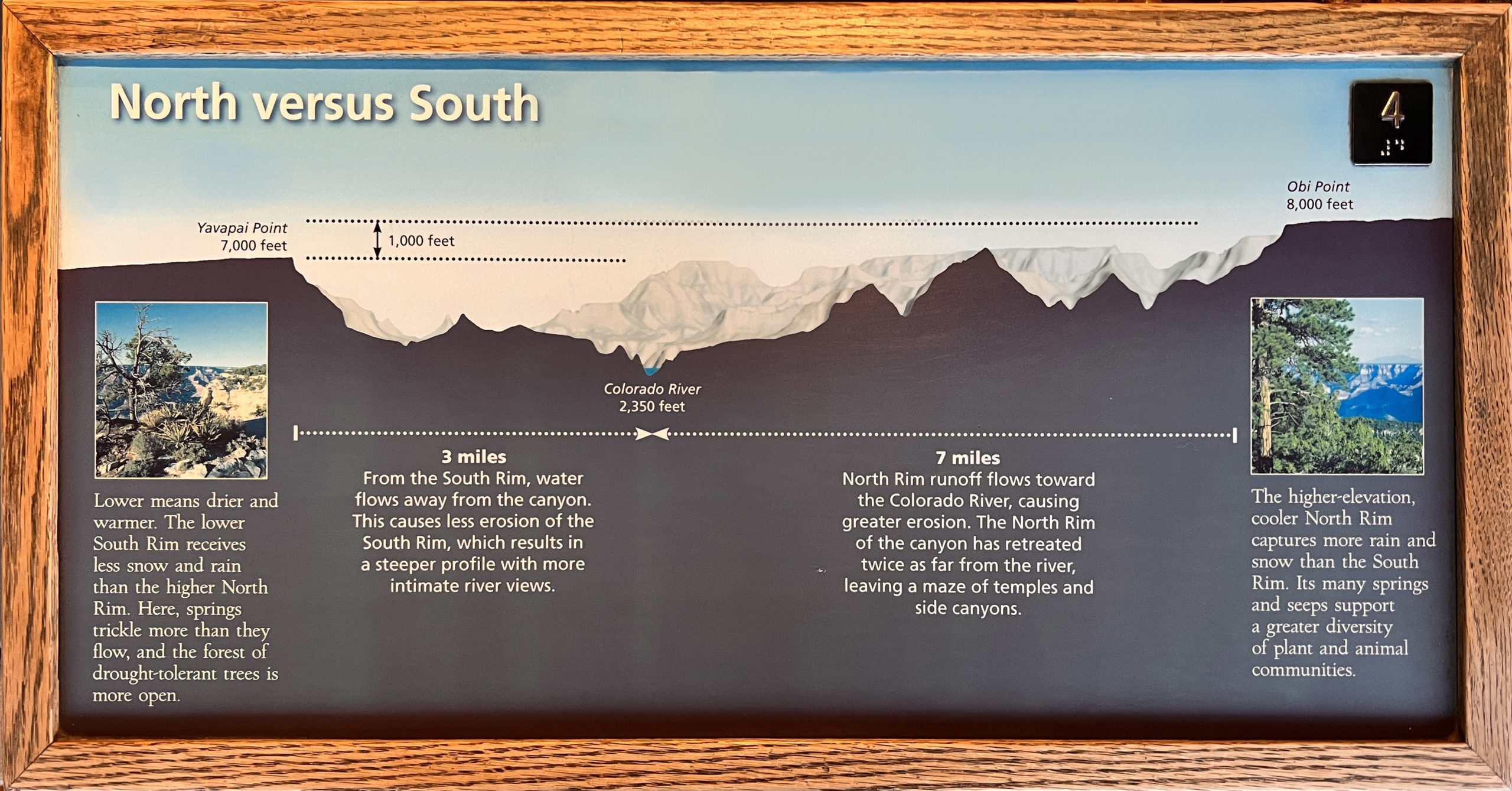
The big idea is not only to let people know what it is…but to tell them what it is when they see it.
– Major R. Hunter Clarkson, founder of Indian Detours, 1925
The Perfect Pair
While some other entrepreneurial spirits tried to set up shop at the Grand Canyon, none succeeded (or even came close) like the partnership between the Santa Fe Railroad and the Fred Harvey Company.
With the railway providing transportation and Fred Harvey providing lodging, food, and guided tours, the Grand Canyon became a luxury tourist destination starting in the early 1900s.
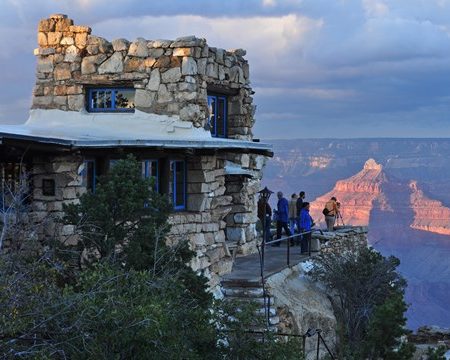
Architecture
The interior and exterior design of the lodges, restaurants, and other structures was carefully considered.
Mary Colter, chief architectural designer and interior decorator for the Fred Harvey company from 1902 to 1948, advanced a style that used the cultural heritage and landscape of the region to inspire the architecture, rather than imitate and impose European styles.
In a male-dominated field and time, Mary Colter held a unique position of power and influence.
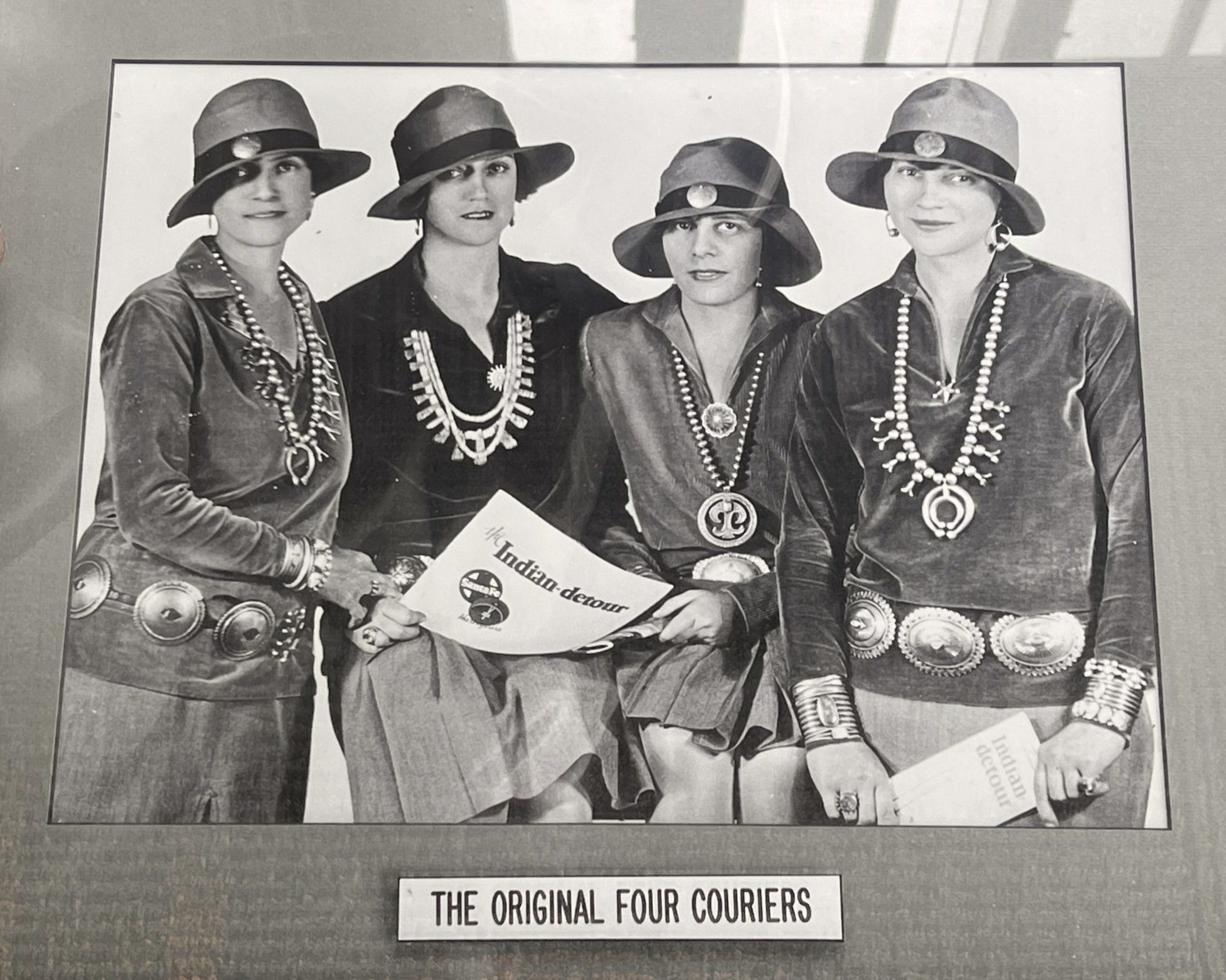
Education
In keeping with the intent to connect tourists with the cultures and landscapes of the Southwest, the Fred Harvey Company launched Indian Detours in 1926. For a few days, train passengers were chauffeured in Packards and Cadillacs for interpretive tours off the beaten path in Arizona and New Mexico.
And who were the guides? Young women with college degrees in history, geology, art, and archaeology. The “Fred Harvey Couriers” helped mold the image of the Southwest known to this day.

